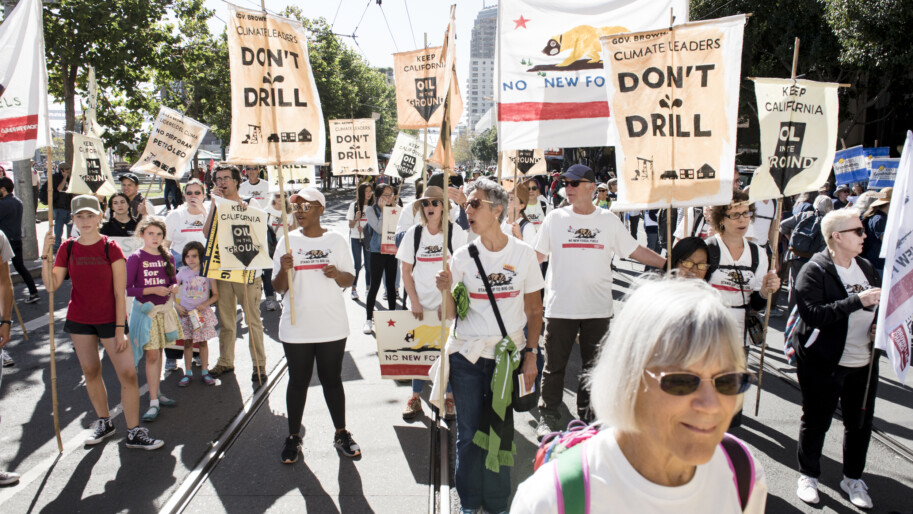The Climate Center’s Bill Tracker helps you stay on top of the climate bills that are in front of the California legislature — and take action. The tracker includes a curated list of bills addressing energy, climate justice, transportation, adaptation, resilience, sequestration, and other issues related to the climate crisis. To review all bills in California, head to the state legislative information page.
There are a few different search and filtering options to help you find what you’re looking for.
- Use “The Climate Center Stance” filter at the top of the page to sort bills by those sponsored and/or supported by The Climate Center, those we oppose, and those we support if they’re amended. You can also see bills we are monitoring and bills for which we haven’t taken a position.
- You can also filter by the status of a bill. “Active” bills are currently moving through the legislative process, “enacted” bills are those that have been signed into law, bills that “failed in committee” didn’t get enough votes to move on to the governor’s desk, and vetoed bills passed out of the legislature but were then “vetoed by the governor.” Some bills are also “held in committee” for extended periods of time. This means there are concerns with the bill among the committee chair and members and if the concerns are not resolved and the bill heard, it eventually fails in that committee.
- To search for a bill by title, bill number, or author, use the keyword search bar.
- If you see a button that says “Support this bill” while scrolling through the list, that means you can reach out to your state legislators directly through the form on the page!
About the California legislative process
Bills can be introduced in either house — the California State Assembly or the California State Senate. Each bill must be heard in policy committees and the Appropriations Committee before being voted by the full body on the floor. If a bill makes it through the first house, it then goes to the other house and goes through the same process. The legislature works in two-year cycles. Bills that are introduced in the first year of a two-year session may be held over for a year and become “two-year” bills.
There are five positions The Climate Center and our partners can take in relation to a bill, which are noted:
- Support. Support means you’ve submitted a to the policy committee where the bill will be heard letting them know you want them to vote “yes” on the bill. After submitting the letter, your support will be noted on the committee analysis of the bill. It’s also a good idea to submit a letter to the bill author.
- Oppose. Opposing a bill works the same way as supporting, only you’re urging the committee to vote “no.”
- Support-if-Amended. This is a way to express that you like the general intent of a bill but see ways that it can be improved.
- Oppose-unless-amended. This position signals that you either oppose a bill or oppose certain provisions of a bill.
- No position. This is exactly what it sounds like! Bills in our tracker that say “monitoring” are ones we haven’t taken a position on.
More legislative resources
Use these key resources to navigate the legislative sessions that come and go every year.
- Find Your Representative is a handy tool that helps you quickly identify your own state representatives. You can use this to get contact information if you want to reach out to your legislator in support of a bill not sponsored by The Climate Center.
- The California State Senate has a step-by-step explanation of how bills move through the legislative process here.
You can see contact information for all of the members of the state legislature for both houses at the links below.
The list of standing committees will help you know which legislators are on the committees that are reviewing the bills you care about.
The legislative calendar will help you know key deadlines in the California state legislature:
- January 3 – Legislature reconvenes.
- February 16 – Deadline to introduce bills.
- March 21 – Spring recess begins.
- April 1 – Legislature reconvenes.
- April 26 – Last day for policy committees to hear and report to fiscal committees fiscal bills introduced in their house of origin.
- May 10 – Last day for policy committees to meet prior to May 28.
- May 24 – Last day for each house to pass bills introduced in their house of origin.
- June 15 – Budget bill must be passed by midnight.
- July 3 – Last day for policy committees to meet and report bills. Summer recess begins upon adjournment, provided budget bill has been passed.
- August 5 – Legislature reconvenes from Summer recess.
- August 19-31 – Floor session only. No committees may meet for any purpose.
- August 31 – Last day for each house to pass bills.
- September 30 – Last day for the governor to sign or veto bills.
For detailed views, see:
- Assembly: https://www.assembly.ca.gov/schedules-publications/legislative-deadlines
- Senate: https://www.senate.ca.gov/legdeadlines
Televised Assembly and Senate floor sessions and committee meetings:
While the resources above are helpful to closely track the activities of the California legislature, the bill tracker allows you to easily see which climate bills are facing the California legislature and take climate action now without needing to dive deep too into the legislative process. Our goal is to make it easy for people from all walks of life — not just policy experts — to build support for bold, equitable climate policies!
If you have questions about how to use the tracker or suggestions for how to improve it, we’d love to hear from you! Contact our team at info@theclimatecenter.org and we’ll get back to you as soon as we can.
